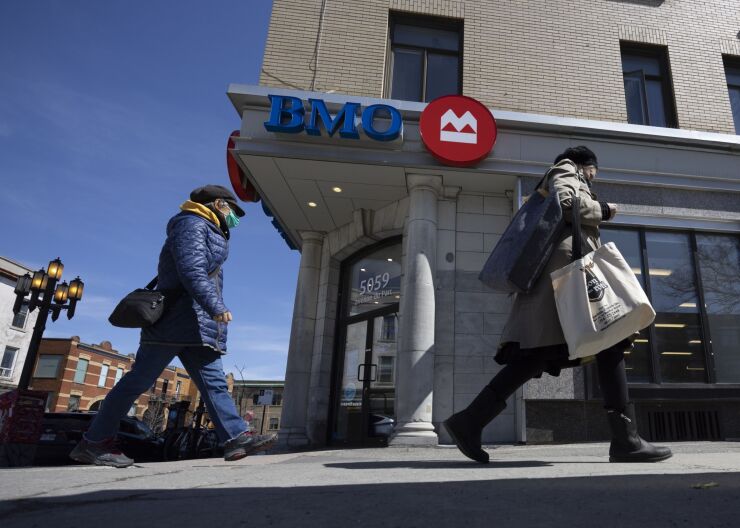
An economic downturn this year could put a damper on loan growth at BMO Financial Group, executives said Tuesday.
The Canadian bank, which recently grew its U.S. footprint by acquiring Bank of the West, said it now expects loan growth in the mid-single-digit range in 2023. That forecast is down from a projection of high-single digit growth when the bank last reported earnings in October.
"Obviously, the economy is slowing a bit," David Robert Casper, BMO U.S. Chief Executive Officer, said Tuesday on a call with analysts. "We're not slowing, but the economy is."
BMO executives expect elevated interest rates to result in slower economic growth in both the United States and Canada this year. Central banks in both countries will likely hold off on reducing rates until 2024, BMO said.
Numerous other banks have recently offered similar forecasts about the impact of a potential economic downturn on loan volumes.
At Cincinnati, Ohio-based Fifth Third Bancorp,
At BMO, lending trends remained strong in the most recent quarter, despite projections for lower growth this year. During the three-month period that ran from November to January, the bank's loans grew by 12%, including a 16% increase in commercial loans. Loan growth in the bank's residential mortgage segment continued to outpace that of its peers, increasing by 11% year over year, the bank said.
Investments in technology, employee compensation and expanding the company's sales force boosted expenses by 9% year over year. But BMO said it expects expense growth to moderate this year.
During the most recent quarter, the bank recorded a one-time loss of $1.46 billion driven by a steep increase in interest rates between the December 2021 announcement of its deal to acquire Bank of the West and the closing of the deal this month. The bank said it lost money on interest-rate swaps, U.S. treasuries and other instruments whose value depends on the movement of interest rates.
The $13.8 billion deal has vaulted BMO to a position as one of the 10 largest banks in the U.S. by assets. BMO doubled its U.S. footprint with the acquisition, and it now expects its U.S. business to account for 45% of its total earnings. That is up from 27% five years ago.
BMO reported quarterly earnings per share of $2.37 and revenue of $5.4 billion. Strength in the bank's personal and commercial banking business units helped earnings beat expectations.





